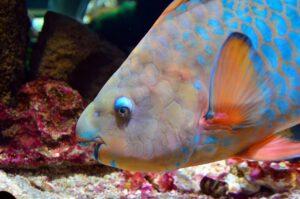There have been some habits that organizations have traditionally accepted as leadership wisdom. But now it’s time to put our learning hats on and reflect on whether what we think is good practice is, in fact, still applicable to the world we live in today.
I look to patterns, flow, relationships, and emergence to understand complex adaptive systems. These observations tell me that our world will continue to be disrupted. We are facing significant challenges with climate change and social tensions – politically, communities, health threats, deep value tensions, global economics, and much more – and these disruptions will continue to throw new adaptive challenges at us.
Some people hope things will return to “normal” now that we have figured out how to live with COVID-19. I don’t believe that will happen. Instead, I think we are undergoing a decade of disruption (at least!) where disruptive events will increase in both number and frequency. Therefore, now is the time to be proactive, review our current leadership body of knowledge and practices, observe what’s changing, anticipate the habits and theories that are still relevant….and decide what we need to let go of to move forward.
Eliminating the idea of lean and mean
In my blog last week, I explained why having redundancy in critical areas of an organization is essential for its future resilience. I examined the definitions and attitudes organizational leaders have about redundancy in their organizations. A common activity in the pursuit of being a lean, mean organization is eliminating an asset or employee deemed no longer useful. In many cases, that’s simply the wrong mindset.
Nature would say resilience requires critical redundancies in any system. Humans have two nostrils and one mouth that provide critical redundancy in our ability to continue breathing if one or both nostrils can no longer function. Nature offers more examples where redundancy creates resilience in its many different species, like the parrotfish that feed on the tiny algae growing on the surface of the coral. By grazing on these algae, the parrotfish enables the coral to survive and thrive. And because Nature operates on an eco-systemic view, other species like surgeon fish, sea urchins, and rabbitfish also play the same role.
It’s not just Nature that proves this hypothesis of redundancy = resilience. Engineers agree with this as well. For example, an airplane’s landing gear has three different software and manual operation methods that provide redundancy when landing. Because safety is a high priority for many mechanical and technological systems engineers, they always build in critical redundancy. These examples from Nature and our manufacturing environments demonstrate how diversity and function are connected to resilience.
The danger of not developing critical redundancy
Despite knowing that critical redundancies are essential to healthy resilience, humanity gravitates toward eliminating redundancy in today’s global human ecosystem. In just 100 years, we’ve lost 90% of the crop varieties that provide us with our daily food intake, for example. Our human organizations are ignoring (or unknowing) where critical redundancy is needed to maintain function when disrupted, the very DEFINITION of resilience!
The absence of understanding and protecting redundancy in our organization makes us more fragile to disruption! As we move toward a future with more and more disorder, the lean, mean organization framework – particularly for our employees – no longer seems like good business practice.
Nature teaches us that being lean and mean also means we are intentionally making our organizations more fragile.







Excellent